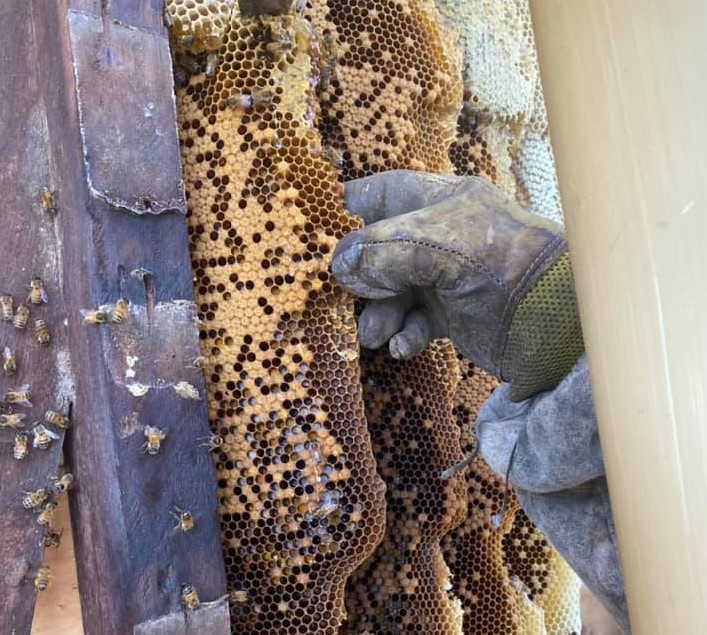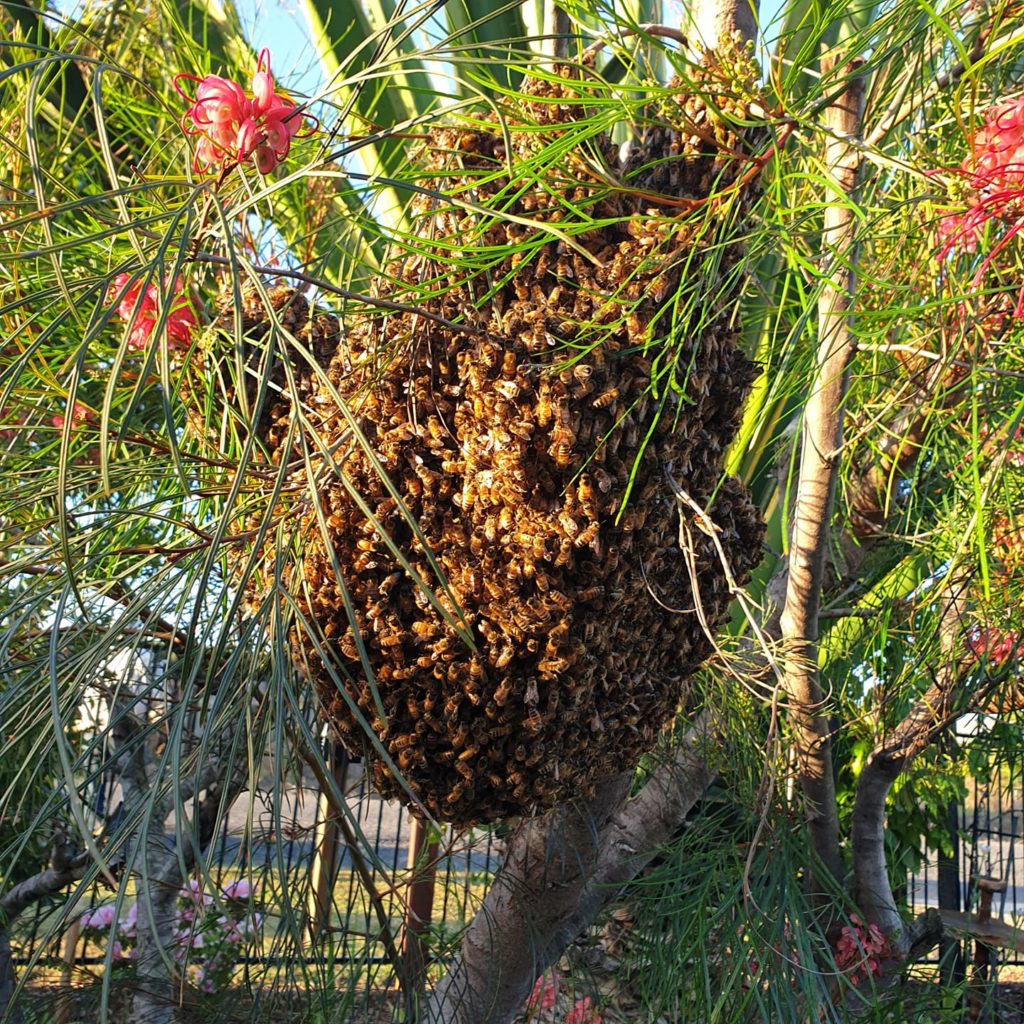
Almost 50,000 bees have been removed from a Bundaberg home signalling the start of the spring bee swarming season.
In the past month Bundaberg Bee Keepers Association president Bec Pohlner has attended four bee swarms, most notably removing bees from inside the walls of a house.
“On average most colonies are between 30,000 and 50,000 bees, so we probably removed around that number of bees from the house,” Bec said.
“This past weekend’s swarm was the easiest removal we’ve done simply because it was on the wall of an old Queenslander and we just had to take out the wall panelling and the colony was just behind that.”
“We didn’t have to cut any holes in the wall, just take off the timber from the outside of the house see where the majority of the colon was, cut out the brood and put it into the hive and then clean out all the honey and wax.”
Swarming is part of a natural cycle
Bec said that in most instances, removing a swarm was relatively easy but could take hours if inside the walls of a house.
She said that swarms were just bees in transit who had left the original hive together for safety and were scouting for a new home.
“Bees will swarm because they’ve run out of room in their current hive and the queen gathers up around 85 percent of the colony and tries to rehome them,” Bec said.
“Most times the swarm will go and land on a nearby tree and send out scout bees to try and find a suitable home.”
For bees a suitable home can be inside the walls of a house or inside the engine bay of a car, and Bec said they tended to seek out warm protected locations.
“We’ve gone to retrieve bees in sheds which were in an old wardrobe. We’ve also removed a swarm from an old caravan and my husband and I have retrieved a colony of bees in a compost bin too.”
More flowers, more bees

Bec said with a predicted La Nina weather pattern bringing more rain to the region, swarms could become more regular.
“There will likely be more and more around and if we get the predicted rain over spring then there will be a lot more,” she said.
“When everything begins to flower there’s higher nectar and pollen, so basically more flowers producing nectar means more bees and therefore they need to make a new hive.”
She said that if you locate a swarm, it was important to keep a safe distance and contact a professional beekeeper if close to a house or people.
Bundaberg Bee Keepers Association undertakes bee removal free of charge and can be contacted on 0467 728 202
The Bundaberg Bee Keepers Association formed in May 2019 and is open for new members and happy to help provide information about bees to the public.
- Other news: The Cookie Daze fresh as a daisy




